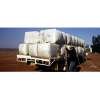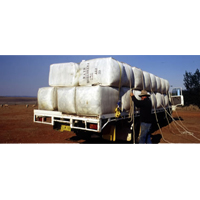
Merino knits range can be verified as sourced from Australian farms
According to Australian Wool Innovation (AWI), Australian wool production is slowly rising, arresting a 20-year trend of decline. Good seasonal conditions across eastern Australia, higher wool prices and a lift in the retention of ewes and lambs is said to have led the Australian Wool Production Forecasting Committee to slightly lift its forecast for shorn wool production in 2010/11 to 340 million kilograms, up from its forecast 335 million kilograms, made in December 2010.

4th April 2011
Knitting Industry
|
Sydney

According to Australian Wool Innovation (AWI), Australian wool production is slowly rising, arresting a 20-year trend of decline.
Good seasonal conditions across eastern Australia, higher wool prices and a lift in the retention of ewes and lambs is said to have led the Australian Wool Production Forecasting Committee to slightly lift its forecast for shorn wool production in 2010/11 to 340 million kilograms, up from its forecast 335 million kilograms, made in December 2010. “The small increase is due to a slight increase in sheep shorn and average fleece weights,” Committee Chairman Russell Pattinson said.
In releasing its forecast today, the Committee noted that the increase in sheep shorn was, in part, due to some early shearing due to seasonal conditions and in response to the strength of the wool market.
The Committee has also noted a change in the diameter profile of the national clip with reduced volumes of fine Merino wool being produced and an increased production of strong Merino and cross-bred wool types, as was forecast in December.
The Committee has also released its first forecast for the 2011/12 season and expects shorn wool production to rise by 1% in 2011/12 to 345 million kilograms, due to a slight increase in sheep numbers (68.3 million, an increase of 0.9% from the 2009/10 level of 67.7 million) and sheep shorn. The increase in sheep numbers is said to be in line with ABARES and Meat and Livestock Australia forecasts.
“Strong grower sentiment has been reported toward the retention of stock, especially Merinos. This has been directly reflected in the significant decrease in the sheep turnoff, reported by the Australian Bureau of Statistics together with data from MLA’s National Livestock Reporting Service data. While the increase in sheep numbers and wool production may only be small, it certainly suggests that the long run-down experienced since the early ’90s may be ending,” an AWI statement said today. However, Western Australia is said to be the exception.
“While the outlook for south-eastern Australia wool production in the coming year will benefit from the excellent foundation laid by above average 2010/11 rainfall, the committee is concerned with the poor seasonal conditions in Western Australia and will closely monitor this in coming months,” Mr Pattinson added.

Business intelligence for the fibre, textiles and apparel industries: technologies, innovations, markets, investments, trade policy, sourcing, strategy...
Find out more